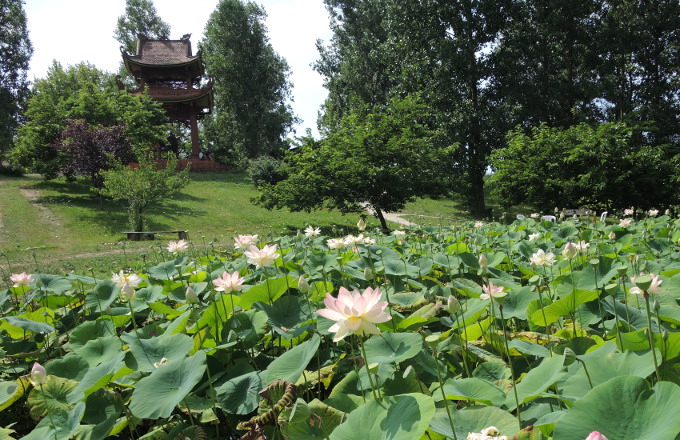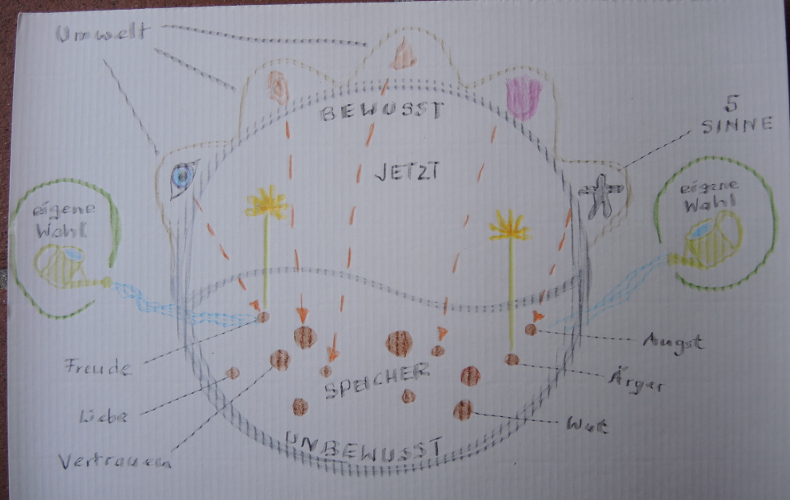
I am back from my July vacation.
As planned, I visited the Buddhist monastery Plum Village near Bordeaux, founded by the Vietnamese monk and Zen master Thich Nhat Hanh.

On the way there, I also visited my school classmate Gerald's fablab FabD'Oc in Brassac and spent two nights sleeping out on the beach of the Atlantic at Le Porge. Here are some photos from the trip:
Below, I share some personal notes from my experiences in Plum Village, followed by a Revit API related issue that just cropped up:
I translated the following text from English to German language to share with some of our friends. Please click here for the German version:
This is a sort of What I did in my holidays primary school essay :-)
I could also summarise it as my fruitful struggle to smile at myself.
Above all, Plum Village is a school and practice opportunity for mindful living.
It is also a Buddhist monastery, and the monks and nuns living there provide the opportunity for anybody to come for a retreat to live and learn.
Finally, it is a very beautiful place in a beautiful part of the French countryside.
It welcomes all kinds of people and all ages, children, teens and adults. It is very open to families with children, individuals and couples.
It is a really wonderful place for families; the kids are allowed and encouraged to really enjoy themselves. They go wild and practice mindfulness as well.
I went as a couple with my partner Moni. In a ceremony at the end of the retreat, we both made a commitment to practice one particular aspect of mindfulness in our everyday lives, Loving Speech and Deep Listening. We are thus now disciples of Thich Nhat Hanh and members of the 43rd generation of disciples of Siddhartha Buddha.
Mindful living obviously begins with myself and requires continuous practice.
The most effective practice field is with my closest connections, e.g., partner, children, parents, family, friends and colleagues.
The theory and practice of mindful living is free of any kind of religious context; it is more like a philosophy and an art.
You could call it a school of happiness, a Lebensschule, a place to learn and practice the art of relationship with yourself and others.
I spent one week there.
The first day or two was strongly focused on deep relaxation, completely devoted to conscious breathing and relaxation.
That helped create space for awareness, contentment and happiness.
Other important teachings included noble silence, conscious eating (incl. queueing and taking only what you need), walking and breathing meditations, stopping each time you hear a bell and numerous songs describing the practices.
Glocke der Achtsamkeit.
After a day or two of relaxation and slowing down, we were given one specific piece of homework:
When you wake up in the morning, before doing anything else, smile to yourself.
If you forget and get up, go back to bed again.
Repeat until successful.
I found that a very hard thing to do.
I woke up in the morning and remembered the exercise, but felt unwilling to smile.
I longed to smile, but it felt unauthentic.
I practiced doing so anyway and learned a lot from that.
I realised that a strong part in me does not wish to feel happy and tries to make other people around me responsible to care for my happiness instead.
Making the conscious choice to smile at myself first thing after waking up, and as often as possible during the day as well, really made a difference to my mood.
I finally took responsibility for my own happiness.
Sometimes my smile still does not feel completely true and authentic; however, I persist.
What does feel true and authentic to me, always: enjoying the fact that I can breathe in and breathe out, that I am alive, that I have a body.
What a gift, what a pleasure, what ecstasy just being alive!
I have food and shelter and freedom.
I can walk and be aware of each step I take.
Now, after returning from Plum Village, as a result of the week of mindful practice, I feel more alive.
I am more active and I go more for what I enjoy.
I realise and promise myself that this is not a temporary effect that will gradually dissipate, because I have the power to keep making this conscious choice as long as I please.
Yesterday, after returning to Switzerland, we went for a quick short swim en route in the Melezza River, and another one in the Lago Maggiore.
Normally, I would not have initiated both and motivated my partner to join me.
Now I feel more initiative and aliveness, more connected with myself, more expressive and authentic.
I am very grateful for the teaching!
Here is a picture to illustrate the practice of mindfulness as the mindful watering of seeds stored in the unconscious:

All our input comes through the five senses (top).
All experiences are stored as seeds in the unconscious (bottom).
We can make a conscious choice, which of the seeds to water and nourish.
The conscious manifestation always happens in the current moment.
The unconscious seeds can be traumata or good experiences and can be associated with all kinds of feelings.
Depending on whether we nourish and water them, they flourish and manifest more or less.
We have a choice of which seeds we choose to manifest.
If we notice that we are reacting to a sensation in a way that does not do us or our environment any good, such as destructive anger, we can consciously choose to take a step back, breathe, relax, walk and do nothing else.
There is no need to fight or suppress those seeds. Just do nothing, and they will shrink and wither all by themselves.
The more we water specific seeds, the more powerful they become, and vice versa.
None of the seeds are per se good or bad. Some may be associated with good or bad feelings. Some may cause harmful effects when we choose to manifest them, others may cause beneficial effects.
Buddhists often use the image of the lotus flower growing out of the mud. The mud consists of all kinds of things, and some of them may stink. The lotus extracts what it needs from the mud and manifests in a beautiful way. The mud is in no way bad or negative – it is everything, both good and bad, negative and positive. The lotus stands for the result of a conscious choice that we make.
Englishmen may prefer the image of roses growing out of compost and horse dung.
I'll add one little note on a Revit API related issue as well, a suggestion for the question raised on StackOverflow
on using ReferenceIntersector with topography surfaces:
Question: Does anyone know if ReferenceIntersector works with topograpy surfaces?
I cannot make it work.
I need to find a point on the surface based on an intersection with a line.
Answer: Regardless of whether the ReferenceIntersector does or does not work with topography surfaces, you can pretty easily solve the problem you describe yourself using other means.
Simply ask the surface for its tessellated representation. That will return a bunch of triangles.
Then, implement your own algorithm to intersect a triangle with the line.
That should give you all you need, really.